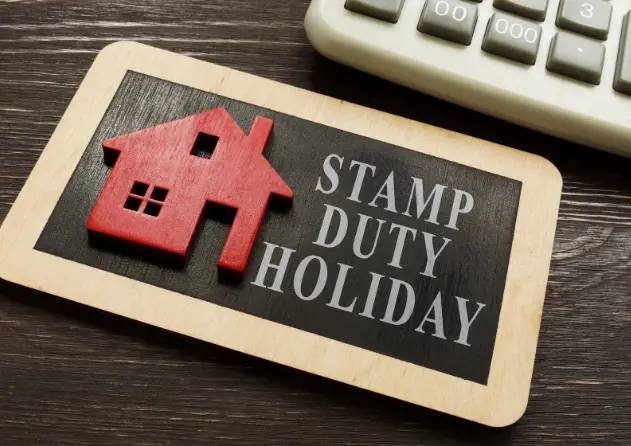Many investors look to the housing market as a vehicle for building wealth and generating passive income. For those interested in buy-to-let properties, an important consideration is determining how much stamp duty tax will be owed upon purchasing an investment property. Stamp duty land tax (SDLT) is a building transaction tax that investors pay when buying a property. The rates in the UK vary based on the purchase price of the property and whether the buyer owns any other properties. This guide outlines how much stamp duty on buy-to-let properties is required in England and Northern Ireland for the 2024 tax year, recent developments, and how to calculate SDLT rates.
The UK Rental Property Stamp Duty Rates in 2024
For buy-to-let property purchases in 2024, investors will pay stamp duty land tax (SDLT) based on the purchase price of the property above the threshold. The SDLT threshold is the minimum property value that an investor may purchase without paying stamp duty, and it varies for both first-time buyers and existing buyers, as outlined below:

- Buy-to-let stamp duty for first-time buyers is 5% on the portion of residential property price from £425,001 to £625,000.
- Properties worth up to £425,000 may be exempt from SDLT.
- For property worth over £625,000, the standard SDLT rates apply.
- For existing buyers, the SDLT threshold is:
- £0 if buying a residential property in addition to an existing residential property (Higher SDLT rates apply here); and
- £250,000 if buying a residential property but don’t own an existing residential property (Standard SDLT rates apply here).
- For non-residential properties and lands, the threshold is £150,000 for both first-time and regular buyers.
The current landlord stamp duty rates—which have taken effect since September 23, 2022—are as follows:
| Property Purchase Price | Standard SDLT Rates | Higher SDLT Rates |
| Below £250,000 | 0% | 3% |
| The next £675,000 (From £250,001 to £925,000) | 5% | 8% |
| The next £575,000 (From £925,001 to £1.5 million) | 10% | 13% |
| The remaining amount (The portion above £1.5 million) | 12% | 15% |
To recap, investors who already own a residential property—i.e., buying a second home—pay a higher stamp duty tax of 3% more than the standard rate, hence the differences in the above table. However, if the investor is replacing their main residence—i.e., if after buying the property, it is the only residential property they own—then the standard rates apply. In this case, they don’t need to pay the higher SDLT rate.
Note: Investors who paid the 3% surcharge and later sold their previous home can apply for a repayment of the surcharge. This holds as long as the sale is made within 3 years of the second property purchase.
API Global recommends using a stamp duty calculator to compute stamp duty costs for any prospective buy-to-let property. That way, investors can determine if the total investment—including purchase price, stamp duty, renovations, and other fees—will generate an acceptable return and capital growth over the long run based on market conditions. Investors should contact their wealth advisor for insights and recommendations on buy-to-let investments tailored to their financial goals.
It’s essential to note that the UK government does offer stamp duty exemptions on certain occasions. In 2020, there was a stamp duty holiday, which benefited most buy-to-let investors. Let’s explore in more detail what this tax holiday entailed and how it spurred growth in the UK property market.
What Is the Buy-to-Let Stamp Duty Holiday?
The Stamp Duty Land Tax (SDLT) holiday in 2020/2021 allowed buy-to-let investors to purchase properties up to £500,000 without paying any stamp duty. The first part of the holiday lasted from July 8, 2020 to June 30, 2021, while the second part was from July 1, 2021 to September 30, 2021 (with a reduced threshold of £250,000). The below section discusses the perks this tax holiday offered to investors.

The Impact of the Buy-to-Let Stamp Duty Holiday
The stamp duty holiday for buy-to-let property developments allowed investors to acquire real estate without incurring the typical stamp duty fees. This meant investors were able to save some capital, which they could channel towards additional property purchases or renovations.
Based on the rates in place before the holiday, an investor purchasing a £300,000 buy-to-let property would have had to pay £5,000 in stamp duty. However, anyone who bought such property in, say, November 2020 would have been exempted due to the £500,000 threshold. Properties worth more than £500,000 incurred adjusted rates ranging from 5% to 12% depending on the total property value.
The tax break spurred property investment across the UK, particularly in emerging real estate markets. Investors sought to capitalise on the incentive and lower costs to expand their property portfolios, especially in destinations with solid growth prospects and tenant demand.
The SDLT holiday offered a temporary opportunity for buy-to-let investors to expand portfolios at a lower cost. Although the incentive has ended, we still recommend investors keep track of the news for any new tax relief policies that may benefit them. And with the recently increased standard and higher SDLT rates, it’s important investors know how to calculate stamp duty charges on their property.
How to Calculate Stamp Duty on a Rental Property Purchase
Calculating stamp duty on a buy-to-let or residential property purchase in the UK can be complicated due to the different rates and thresholds involved. However, the trick is to note the rates for the different increments in property value, calculate the SDLT individually, and then sum up the total.

For investors buying an additional residential property while owning one, there is a 3% stamp duty surcharge, but the method of calculation remains the same.
Using the standard rental property stamp duty rates, a property worth £950,000 will incur a stamp duty tax of £36,250, and here’s how to calculate this figure:
- 0% on the first £250,000 = £0
- 5% on the portion from £250,001 to £925,000 = 0.05 x £675,000 = £33,750
- 10% on the portion from £925,001 to £1.5 million = 0.1 x £25,000 = £2,500
For faster results, we recommend a stamp duty calculator. It also eliminates errors to provide a more accurate value in addition to making calculations faster. Investors may also contact their wealth manager for expert guidance on calculating SDLT rates.
While stamp duty charges are essential, the cost can reduce the total profitability of an asset. Therefore, we recommended that investors learn and apply certain strategies to reduce the stamp duty payable on their rental properties.
How to Reduce Stamp Duty Bill as a Buy-to-Let Landlord
There are 2 major ways to reduce landlord stamp duty, including:
- Transfer of equity
- Joint property ownership
1. Transfer of Equity
If an investor purchases a property with a mortgage jointly with their spouse, both of them will be liable for stamp duty. However, if one of them later transfers their share of the property’s equity to the other, the transfer may qualify for stamp duty relief. This means the seller won’t need to pay higher tax rates for purchasing a second property; only the basic rate will be charged.
2. Joint Property Ownership
Owning investment property jointly with another investor is one way to split stamp duty liability. If two unmarried investors purchase a buy-to-let property abroad or locally, the stamp duty is charged on the share of the property each person acquires. For example, if two investors purchase a £500,000 buy-to-let property as tenants in common with a 50/50 share each, each investor’s stamp duty liability would be based on £250,000.
Frequently Asked Questions
How to avoid stamp duty on buy-to-let?
To avoid stamp duty on buy-to-let properties, investors should ensure they’re buying a property below the SDLT relief threshold. While a first-time buyer generally enjoys a reduced rate of stamp duty for buy-to-let, the standard SDLT rates still apply to the portion of property price above the relief threshold.
How do I avoid stamp duty on a second property?
Investors can avoid stamp duty on a second property via the following options:
- By gifting the money for the deposit to someone else so they can apply for a mortgage in their name.
- By acting as a guarantor instead of being the legal owner of the property or exploring family offset mortgage options.
- Investors who are civil servants with a spouse can transfer the property to their partner. While they’ll still need to pay the standard SDLT rate, the extra 3% for second homeowners may not be charged.
Has buy-to-let stamp duty been reduced?
No, there is currently no reduction in buy-to-let stamp duty tax. The last reduction happened in 2020/2021. Investors should consult with a tax professional for the most up-to-date information and advice.
Do I pay stamp duty if I change my mortgage to buy-to-let?
No, there shouldn’t be any stamp duty or land transaction tax implications for investors changing their existing residential mortgage to a buy-to-let mortgage without purchasing a new property. Stamp Duty Land Tax (SDLT) is applicable to property purchases, not changes to mortgage terms.
Conclusion
Investors should be aware of how much stamp duty on buy-to-let is required in the UK and plan accordingly based on individual investment goals and property values. While higher stamp duty rates do increase acquisition costs, for long-term investors focused on capital growth and rental income, the tax burden may be offset by future property appreciation and tenant rent payments. To choose the best location for maximised returns, we recommend investors consult with their wealth manager.
Disclaimer: Any information API Global provides does not constitute financial advice and is for educational purposes only.


